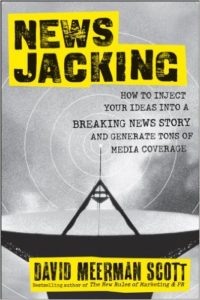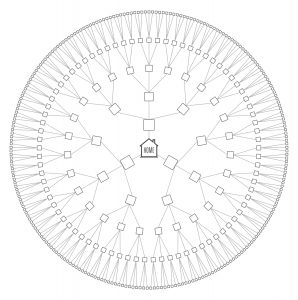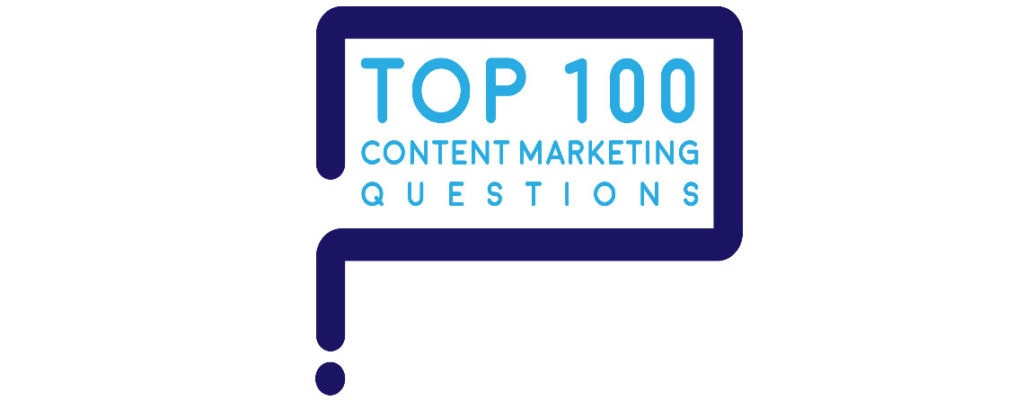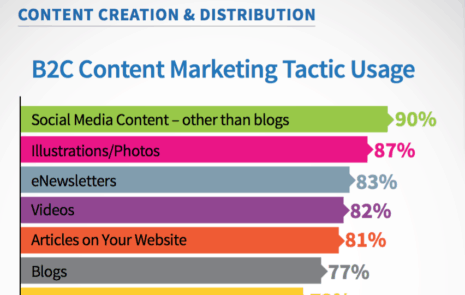
Top 100 Content Marketing Question: How can I leverage existing content in my content marketing strategy?
How can I leverage existing content in my content marketing strategy?
When you already have good content, do you always need to create more?
Maybe not. Maybe you only need to leverage existing content, by freshening up what you have already.
This infographic shows 7 smart ways to leverage existing content. Make sure you squeeze the most out of every single pixel.

It’s smart to leverage existing content before you create more new content.
If your content starts to get a bit stale, repurpose it to increase its value and expand your audience.
Review all your content at least once a year – then refresh, divide, re-envision, or remove content assets to keep your site fresh.
1. Refresh long-form content with an edit or rewrite.
Do you already have good long-form content assets, such as white papers and e-books? If so, consider these actions:
• Write snappy new benefit-laden headlines. A/B test old vs. new headlines.
• Add an executive summary of 2 sentences up front. In boldface.
• Add subheads, bullets, call-outs, and white space to boost scannability.
Taking steps like these helped HP increase traffic to existing long-form content by more than 30%!
2. Renew evergreen content by adding a news hook.

Have recent events or stories in your industry shifted your customers’ perceptions? If so, take these actions:
• Monitor industry news coverage on key topics with a news alert such as Google News. When news stories break, cite them in social media in real-time, and point to your existing content with a link.
• When relevant news appears, revise the lead paragraph on existing content. Add a link to the news.
• Express your company’s point of view about the news. Were these events or announcements good for customers? Why or why not?
• “News-jack” stories from competitors. Whatever competitors or critics say in the news, assert your company’s point of view. Add insightful comments in real-time.

3. Simplify content by improving readability.
Test the readability of your text using the test built into Microsoft Word (under Tools, Spelling & Grammar).

To improve readability, simplify the text. Use shorter words, shorter sentences, and shorter paragraphs.
As your text attains a lower Flesch-Kincaid grade level, you reach a bigger audience. The lower the grade level, the larger the audience who can comprehend your content.
In the telecom and technology space, many websites are written at a 17th-grade or higher level. Why is that a problem?
Here’s the math:
• If your text reads at a 17th-grade level, only 1% of Americans comprehend it.
• If your text reads at an 8th-grade level, half of Americans comprehend it.
• This blog reads at a 7.2-grade level, so most Americans comprehend it.
When you address global audiences, use global English. The Voice of America vocabulary enables you to tell stories using only 1500 words.

Why is global English important? Because the number of people who learned English as a second language equals the number of native English speakers.
4. Combine short-form content pieces with long-form content.
Collect short-form content until you have enough to create long-form content. It’s like saving tiles so you can build a mosaic.
• If you’ve been Tweeting on a topic, round up your top 5, 10, or 20 Tweets to create a new piece of content.
• Mash up existing videos to create a new, longer video.
• Combine 10 blogs on a topic into an e-book or white paper.
• Collect 100 blogs and turn them into a book.
5. Divide long-form content into short-form content.

Start with long-form content such as a 10-page white paper, then convert it into short-form content such as:
• 10 two-minute blogs
• 4 five-minute articles
• A series of two-minute videos
• A set of infographics.
Read long-form content with your highlighter in hand. Highlight the pithy sentences and phrases worth a Tweet. These Tweets point people to long-form and short-form content.
6. Re-envision content: turn text into photos or infographics, photos into videos.
Visual is the new headline. Why? People scan web pages. They don’t read.
More than half of people spend less than 15 seconds active on a webpage.

To pull in readers, add images to text pages. Images invite scanners to keep moving down the page. Include captions with each image, since they are highly read.
If your website is too text-heavy, lighten it up. Show before you tell.
Take a license to turn text into charts, graphs, images, photos, and infographics.
The most-read elements on a webpage are the headline, image, and caption below the image. To enhance the meaning of images, include captions that tell the story.
You can easily transform still images into videos with a voiceover. People who don’t read the text may be willing to watch a short video instead.
Why videos? The easier your content is to consume, the more likely people will consume it.
7. Clear the deadwood: Remove obsolete content from your site.
On many websites, 20 or fewer pages generate 90% or more of the traffic.
Most pages generate very little traffic. Why keep them?
Consider removing the bottom third of content from your website. It’s deadwood.

Removing content is especially important when you plan to relaunch a website. There’s no need to bring along all your old baggage on the next trip.
Every year, gardeners remove deadwood from trees and bushes because it inhibits growth. Similarly, you need to clear content deadwood off your website.
When technology changes, product information becomes obsolete, or subject-matter experts leave the company, cutting out content that pertains to them.
Then freshen up your content with information about new technologies, new products, or new subject-matter experts.
In summary:
1. Refresh long-form content with an edit or rewrite.
2. Renew evergreen content by adding a news hook.
3. Simplify by improving readability.
4. Combine short-form content pieces with long-form content.
5. Divide long-form into short-form content.
6. Re-envision content to make it more visual.
7. Remove deadwood – obsolete content and ideas.
These 7 approaches will help you leverage existing content better.
As you make content appear fresh and new to users, you up the odds that they’ll explore more of your content.
Before creating new content, squeeze all the value from the content you already have. Spritz it up!

“How can I leverage existing content in my content marketing strategy?” is one of the Top 100 Questions that marketers ask about content marketing. Here are the answers to the Top 100 Questions.





